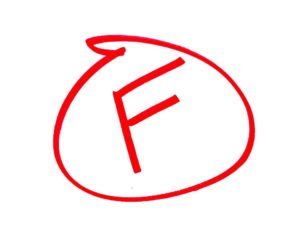
Here’s a fact: every 15 minutes of every day an elephant is killed because of its ivory. And here’s what an expert contends is a fact-to-be: within 12 years elephants will be extinct, the victim largely of poachers who sell their ivory and customers who buy it.
The expert: Dr Dame Daphne Sheldrick, talking from charity’s base in Nairobi National Park, in Kenya. Monday was World Elephant day — and if she’s correct there may not be too many of them left:
Conservationist Dr Dame Daphne Sheldrick revealed an elephant is being killed every 15 minutes in Africa to supply an insatiable and unsustain-able demand for ivory.
From her charity’s base in Nairobi National Park, she said: “Today is World Elephant Day but in 12 years’ time there may not be any elephants left in Africa to celebrate.
“A world without elephants is hard to comprehend, but it is a real possibility. Against a submachine gun or poacher armed with a spear, they stand little chance.”
About 36,000 elephants in Africa were slaughtered last year despite a ban on ivory.
They fall victim to highly organised and well-armed gangs. In Kenya, 162 elephants out of a population of 35,000 were killed by poachers between January and July.
Ivory is in soaring demand in the Far East for trinkets.
Dame Daphne, 79, said that in just two raids last month Kenyan authorities seized 4½ tons of ivory.
In Hong Kong at the same time, Customs obtained more than 1,100 tusks.
Dame Daphne, who heads the David Sheldrick Wildlife Trust named after her late husband, said captured contra-band is thought to equate to just 10 per cent of actual smuggling. She picks up the pieces of this grisly trade by helping orphaned elephants.
The main culprit?
“When it comes to elephant killing, and indeed most of the illegal trade in wildlife, all roads lead to China,” writes Philip Mansbridge, CEO of Care for the Wild International, on HuffPo. “Some of you may think that this is a sweeping generalisation, but the truth is it’s not. Yes – there are many other markets for ivory right now, but the biggest and most insatiable appetite comes from China without any shadow of a doubt – this is common fact.
“Whilst China should be recognised in some part for stepping up their fight against wildlife crime recently, they should also be condemned for their inability to even partially quash this demand, which has increased rapidly with the emergence of a new, wealthier, middle class.”
Want to help organizations take action? Visit Care for the Wild International and the David Sheldrick Wildlife Trust to learn more.
Mansbridge’s post begins with this:
It’s hard to imagine that anyone reading this blog isn’t already aware that right now elephants are in crisis. For many years, leading global conservationists and charities have been doing all they can to stop the killing of elephants to fuel the illegal ivory trade – some behind the scenes and some in the public eye, but all fighting a common cause.
Over the last few years the issue has escalated beyond any experts’ predictions, and the elephant slaughter has increased at a truly unprecedented rate. This dramatic escalation coupled with the press-friendly voices of celebrities such as Leonardo DiCaprio, Yao Ming (one of China’s most widely known public figures), Kristin Davis, and more recently high profile politicians such as Barack Obama, Hillary and Chelsea Clinton, has now, thankfully, brought this tragic story back to the front of the public’s mind.
So, on World Elephant Day, just how bad is this crisis?
It’s bad.
Elephant poaching across Africa has reached an unprecedented high and now looks set to wipe out our beloved elephants from the planet in as little as 20 years. Some reports are now suggesting that up to 40,000 elephants are being killed for their tusks each year in Africa alone. That is almost five per hour, every hour, every day. Can you imagine this – five per hour – think for one minute about how that equates to your day. What will you do in the next 12 minutes? Maybe read this blog, surf the net, clear a couple of emails, make a coffee… bang. Another magnificent elephant hits the ground.
In minutes his tusks will be removed, usually by cutting most of the face off, often by chainsaw. An intelligent, social elephant with complex communication and family structures, that may have walked around its land in peace for the last 60-70 years, now dead and soon to be a trinket. This is not only unsustainable and cruel – it is barbaric.
Read it in its entirety.
But it’s not just elephants that are at risk due to poachers: Rinos could also be wiped out. This week the AP had this:
Kenyan Wildlife Service officials say armed poachers shot and killed a white rhino and cut off its horn in Nairobi National Park, the first poaching death of a rhino in the urban park in six years.
The killing brings to 35 the number of rhinos killed in Kenya so far this year, a sharp rise from the 29 killed in total in 2012.
A key market to blame for the market for these butchered animals? Celebrity icons:
How celebrity fashion icons fuel illegal poaching and leopard extinction is a
controversial topic because once again in the news Wednesday, August 7, 2013 a mother load of ivory tusks, rhino horns, and leopard skins was seized by Hong Kong customs officials.
Leopard skins, ivory tusks and rhino horns displayed during a press conference fuel controversial questions like how can this crime against wildlife and humans continue? How can we stop celebrity icons and their need for fashion fur?
Customs officials at the Kwai Chung cargo examination compound seized the five million dollar haul containing 1,120 ivory tusks, 13 rhino horns and five pieces of leopard skin after searching a container declared as wood from Nigeria.
Leopard skins bound to be made into high ticket garments no doubt to drap over the shoulders of celebrities like Kate Moss, Paris Hilton, Lindsay Lohan and Kim Kardashian.
A new tool against poachers: drones.
Unmanned aerial vehicles are being deployed to stem the killing of rhinos in Africa.
The exact location of the anti-poaching operation is secret, as is the number of rangers who will be on duty. Also confidential: where the drones will fly as they search out poachers intent on slaying rhinos for their horns – one killed every 11 hours in South Africa alone.
But over several days, Tom Snitch thinks that his project, at a private game farm adjoining South Africa’s famed Kruger National Park, will prove that unmanned aerial vehicles can end the scourge of rhinoceros poaching.
Demand for rhino horn has boomed in recent years, with criminal syndicates offering as much as US$30,000 (RM96,000) a pound (450g) for the horns. Poachers have already killed 515 rhinos in South Africa this year; last year, 668 endangered rhinos died for their horns.
They’re sold in Asia, particularly in Vietnam, where ground-up horns are touted as a cure for hangovers, cancer and other ailments, and where rising incomes have made the horns accessible to more people and their possession a status symbol. Save the Rhino International, a conservation group, won’t talk about the street value of rhino horn, saying that any mention “stimulates poaching”.
And so the war to preserve the elephants, and the rinos from the people who kill them and sell parts of their bodies, and the rich people who buy the products made from the dead animals, goes on. Those battling to save the animals include Wildlife Works rangers in East and Southern Africa.
Here’s another fact:
If this battle is lost, there is no possibly of a comeback.
Photo credit: Wildlife Works blog.
Joe Gandelman is a former fulltime journalist who freelanced in India, Spain, Bangladesh and Cypress writing for publications such as the Christian Science Monitor and Newsweek. He also did radio reports from Madrid for NPR’s All Things Considered. He has worked on two U.S. newspapers and quit the news biz in 1990 to go into entertainment. He also has written for The Week and several online publications, did a column for Cagle Cartoons Syndicate and has appeared on CNN.
















